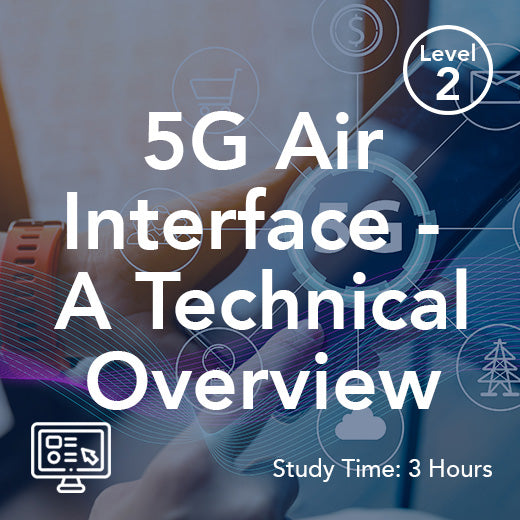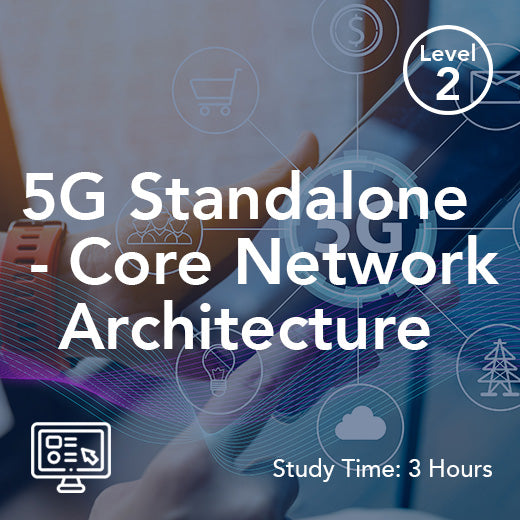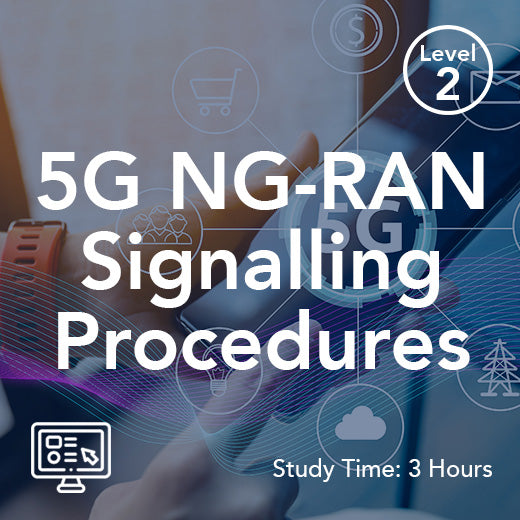What Is 5G Fronthaul And Backhaul?
- , by Stephanie Burrell
- 13 min reading time
The advent of 5G technology has brought about a significant shift in the way we communicate and connect with one another. One of the key components that make 5G networks possible is the concept of fronthaul and backhaul.
Fronthaul and backhaul are two critical components of the 5G network architecture that play a crucial role in ensuring seamless and efficient communication between devices. These components are responsible for carrying data between the radio access network (RAN) and the core network, enabling high-speed data transmission and low latency. The backhaul network is network responsible for communicating data with the Internet, linking core networks to subnetworks.
Fronthaul refers to the portion of the network that connects the base station (also known as the radio unit) to the centralized processing unit (also known as the baseband unit). This connection is essential for transmitting data between the radio unit and the baseband unit, allowing for the processing of signals and the delivery of data to end-users. Fronthaul networks are typically high-capacity, low-latency connections that enable the rapid transmission of data between the radio unit and the baseband unit.
Backhaul, on the other hand, refers to the portion of the network that connects the baseband unit to the core network. This connection is responsible for carrying data between the baseband unit and the core network, enabling the delivery of data to its final destination. Wireless backhaul networks can transmit thousands of data channels, facilitating seamless communication for data, video, and voice.
Together, fronthaul and backhaul form the backbone of the 5G network, enabling high-speed data transmission, low latency, and seamless connectivity. These components are essential for supporting the increased bandwidth, lower latency, and higher data rates that 5G technology promises. Metropolitan area networks (MANs) are utilized in various cities to provide high-bandwidth Wi-Fi connectivity across regions.
In order to support the demands of 5G networks, fronthaul and backhaul networks must be designed to handle large volumes of data, support low latency communication, and provide high reliability. This requires the use of advanced networking technologies, such as fiber optics, microwave links, and advanced routing and switching equipment. The importance of backhaul services in the context of 5G technology cannot be overstated, as they ensure enhanced connectivity and network capacity.
Overall, fronthaul and backhaul are critical components of the 5G network architecture that enable the delivery of high-speed, low-latency communication. Wireless components like microwave bands and mesh networks play a crucial role in backhaul connections. As 5G technology continues to evolve and expand, the importance of fronthaul and backhaul networks will only continue to grow, enabling the next generation of communication and connectivity. Backhaul connections are essential for transmitting data between core networks and individual end users.
Transmission networks are essential for handling the substantial bandwidth demands from enterprise applications and multimedia traffic. Microwave or fiber connections serve as crucial links between access points, such as cell towers and the primary network, emphasizing their importance in facilitating data transmission. The deployment of public safety broadband networks is part of the evolution of critical infrastructure communications, highlighting their importance for public safety agencies that require reliable and secure communication solutions.
Access to a core network access site, such as an internet exchange point, is essential for facilitating data communication and internet connectivity. Fiber connections are crucial for linking access points to the primary network, ensuring efficient data transmission and influencing the overall performance of mobile and internet services. High capacity wireless channels play a critical role in managing data flow and connectivity, thereby influencing network performance metrics such as bandwidth and latency.
Backhaul links are critical in 5G networks for performance management and addressing the challenges posed by increased data loads. Commercial mobile networks utilize backhaul equipment and services to effectively connect their operations, especially in challenging locations where fiber optics may not be feasible or cost-effective. Data networks involve multiple components like access networks, core networks, and backhaul networks, working together to carry information from one point to another within the public internet.
The network core functions as the central point that connects to smaller local networks and facilitates efficient data flow, particularly in relation to backhaul networks. Broadband access is enhanced by private networks and 5G technologies, meeting the increasing demand for bandwidth from enterprise applications and multimedia traffic. Other central exchange points play a crucial role in the process of backhaul, transporting voice, video, and data traffic from mobile base stations to mobile switching centers or alternative central exchange locations.
Wireless networks are integral to backhaul infrastructure, connecting remote cell sites to the core of mobile networks. Wireless carriers utilize various types of backhaul solutions like Ethernet and dark fiber to enhance their network connectivity and manage the demands of modern data usage such as 5G. Network densification is essential for addressing the requirement for higher capacity and lower latency as mobile operators deploy additional cellular sites to meet diverse service needs.
Fixed line backhaul offers stability and performance compared to wireless alternatives, despite higher costs and deployment challenges. Mobile backhaul is essential for performance management, service activation, and the prevention of issues like latency and packet loss, especially as user demands increase. Backhaul technology is a crucial and evolving component of telecommunications infrastructure that plays a vital role in mobile networks.
Wireline networks transport data, voice, and video traffic from mobile base stations to central exchange points, enhancing data communication speed and expanding network coverage. Wired ethernet backhaul improves network coverage and capacity through mesh Wi-Fi systems. Mobile devices rely on backhaul networks to facilitate data transmission between base stations and end-user devices.
Critical communications users such as public safety agencies, utilities, and transportation companies require highly reliable and secure communication networks. Wireless networks are integral to backhaul infrastructure, connecting remote cell sites to the core of mobile networks. Private networks are increasingly preferred for providing broadband connectivity in various settings, including corporate campuses and IoT environments.
Core networks serve as the foundational infrastructure that connects various subnetworks and enables efficient data communication. Fiber availability is a key consideration in assessing the feasibility of different network backhaul solutions. Cell towers serve as vital access points for mobile communication, illustrating the significance of backhaul connections that link these towers to the core network.
Fiber optic networks are essential for linking cellular base stations to the core network, providing redundancy and reliability in data transmission. Emergency response networks rely on backhaul to effectively facilitate communications, especially in challenging locations where traditional fiber connections may not be feasible or cost-effective. The backhaul component is a crucial part of the communications infrastructure in mobile networks, enhancing data transmission efficiency.
Network capacity is expanded by wireless backhaul, especially in scenarios where traditional wired solutions are not viable due to cost or feasibility factors. Wi-Fi backhaul solutions connect users to high-bandwidth networks, particularly in urban areas. Network segments work together to route data effectively, illustrating the complexity of data transmission and the various roles each segment plays in ensuring connectivity.
Wired connections are essential in data transmission systems, specifically highlighting how wired backhaul primarily utilizes these connections. The backhaul connection is essential for data routing and connectivity, detailing various technologies and considerations that impact data transmission speeds, reliability, and user experience. The primary network serves as the backbone for communication between local networks and the Internet.
Internet service providers (ISPs) facilitate high-speed internet access by linking the middle-mile network to the broader telecommunications framework. Reliable connections are provided by metropolitan area networks (MANs) and backhaul networks, ensuring high-speed and secure data transmission. Cell towers are vital in facilitating data transport, as well as the redundancy provided by networking multiple towers together.
Internet connections are crucial for ensuring data communications access, linking various parts of the network to the broader internet. Emergency services networks are evolving to meet the stringent communication needs of critical infrastructure users, such as public health and safety services. Radio waves are used in wireless backhaul systems, transmitting signals alongside microwaves.
Existing mission-critical networks are essential communication systems that must be highly available and secure, particularly for critical infrastructure consumers like public safety agencies. New cell sites are important in addressing challenges associated with 5G network densification and increased capacity demands. Other data networks play a fundamental role in routing information efficiently between devices and servers.
Internet exchange points are crucial connection points in telecommunications infrastructure, facilitating the efficient flow of data and internet connectivity. Wireless spectrum is used in wireless backhaul, transmitting audio, video, and data traffic using microwave connections. Ethernet backhaul is a reliable fiber-based transport solution that extends wireless network connectivity.
Wireless network carriers utilize dark fiber backhaul to develop customized services and private networks tailored to their specific performance requirements. Network coverage is enhanced by effective backhaul solutions, allowing service providers to improve user experiences both inside and outside of their homes. Multimedia traffic requires significant capacity, which private networks are increasingly designed to accommodate.
Fiber providers are key customers of backhaul services, emphasizing their use in connecting challenging or costly tower locations. Deploying fiber is a consideration in the discussion of wireless backhaul solutions, particularly when fiber deployment is deemed impractical or too costly. Mobile switching centers serve as crucial points in the network where data, voice, and other services are routed and managed.
Cell sites are important in addressing challenges associated with 5G network densification and increased capacity demands.
Introduction to 5G Networks
The fifth generation of wireless technology, known as 5G, represents a revolutionary leap forward in mobile network evolution. Offering unprecedented speeds, lower latency, and greater connectivity, 5G is designed to support a wide range of applications. These include enhanced mobile broadband, ultra-reliable low-latency communications, and massive machine-type communications, all of which demand robust and flexible network infrastructure.
At the heart of 5G systems lies the core network, which is designed to be highly flexible and scalable. This flexibility is achieved through the use of software-defined networking (SDN) and network function virtualization (NFV), which allow for dynamic management and optimization of network resources. To meet the high capacity and low latency requirements of 5G, a combination of wireless and wired backhaul technologies is employed. These include fiber optic internet services, microwave connections, and satellite communications, all of which provide the high-speed and low-latency connectivity essential for 5G performance.
The introduction of 5G networks is driving the need for advanced backhaul technologies. Innovations such as dark fiber backhaul and the strategic deployment of fiber are critical to supporting the increased capacity and latency requirements of these networks. As 5G continues to expand, the role of these advanced backhaul technologies will become even more pivotal in ensuring seamless and efficient communication.
Types of Backhaul
Backhaul is a critical component of mobile networks, and there are several types of backhaul, each with its own set of advantages and disadvantages. Wired backhaul, which includes fiber optic and copper line backhaul, offers high-speed and low-latency connectivity. However, it can be limited by the availability of fiber and the cost of deployment, making it less feasible in certain areas.
Wireless backhaul, on the other hand, includes technologies such as microwave and millimeter wave connections. These offer greater flexibility and lower costs compared to wired options, but they can be affected by interference and weather conditions, which may impact performance. Hybrid backhaul, which combines both wired and wireless technologies, offers a balance between speed, cost, and flexibility. This approach is increasingly being used in modern mobile networks to optimize performance and cost-efficiency.
The choice of backhaul type depends on various factors, including the network architecture, the type of data traffic being carried, and the availability of existing infrastructure. By carefully selecting the appropriate type of backhaul, network operators can ensure optimal performance and reliability for their mobile networks.
Backhaul Technologies
Backhaul technologies are evolving rapidly, with a focus on increasing speed, reducing latency, and improving reliability. Fiber optic backhaul is becoming increasingly popular due to its high-speed and low-latency capabilities. It also supports multiple services and applications, making it a versatile choice for modern networks.
Wireless backhaul technologies, including microwave and millimeter wave, are also advancing. These technologies are being developed with a focus on increasing capacity and reducing latency, making them suitable for areas where fiber deployment is challenging. Satellite communications are another option, particularly in remote or underserved areas where traditional fiber or wireless connectivity is not available.
The development of new backhaul technologies, such as quantum computing and artificial intelligence, is expected to further enhance the performance and efficiency of backhaul networks. These innovations promise to provide even greater speed, reliability, and security, ensuring that backhaul networks can meet the demands of future mobile and data networks.
Backhaul Network Security
Backhaul network security is a critical concern, as these networks form a key part of the mobile network infrastructure and are vulnerable to various cyber threats. Backhaul networks face a range of security risks, including hacking, malware, and denial-of-service attacks, which can disrupt communication and compromise data integrity.
To protect against these risks, mobile operators are implementing a range of security measures. These include encryption, firewalls, and intrusion detection systems, which help to safeguard the network from unauthorized access and attacks. The use of specialized digital technologies, such as secure routers and switches, is also becoming increasingly common to enhance network security.
The development of new security technologies, such as artificial intelligence and machine learning, is expected to further improve the security of backhaul networks. These technologies can provide advanced threat detection and response capabilities, ensuring that backhaul networks remain secure and resilient against evolving cyber threats.
Future of Backhaul Networks
The future of backhaul networks is expected to be shaped by several key factors, including the increasing demand for mobile data, the development of new technologies, and the need for greater security and reliability. The deployment of 5G and other advanced wireless technologies is driving the need for higher-speed and lower-latency backhaul networks.
Emerging backhaul technologies, such as terahertz and quantum computing, promise to further improve the performance and efficiency of backhaul networks. These advancements will enable backhaul networks to handle even greater volumes of data traffic with reduced latency and increased reliability.
The increasing use of cloud computing and edge computing is also expected to impact the design and operation of backhaul networks. These technologies require robust and flexible backhaul infrastructure to support distributed computing and data processing closer to the end-users.
Additionally, the development of new business models, such as network slicing and edge computing, is expected to create new opportunities for mobile operators and other stakeholders in the backhaul network ecosystem. These models will enable more efficient use of network resources and provide tailored services to meet the specific needs of different applications and users.
As the demand for mobile data continues to grow and new technologies emerge, the future of backhaul networks will be characterized by ongoing innovation and adaptation to meet the evolving needs of mobile and data networks.



























